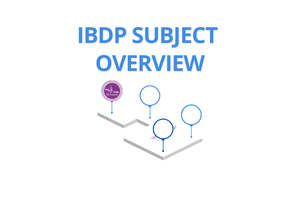Table of Contents
📊 IBDP Mathematics: Applications and Interpretation (SL and HL) – Comprehensive Course Summary
📌 Subject Overview
IBDP Mathematics: Applications and Interpretation focuses on practical problem-solving by applying mathematics to real-world contexts. It emphasizes data analysis, statistical modeling, and technology integration to investigate and solve mathematical problems.
🌟 Key Features
🌎 Real-World Application: Focuses on solving practical, real-life mathematical problems.
📱 Technology Integration: Extensive use of technology (graphing calculators, spreadsheets) for data analysis.
🔗 Interdisciplinary Connections: Supports quantitative methods across economics, biology, and social sciences.
🎯 Aims and Objectives
📈 Communicate Findings: Clearly and effectively communicate mathematical results.
🔍 Mathematical Modeling: Apply and interpret mathematical models to understand real-world phenomena.
💻 Use Technology: Explore and analyze data effectively using technological tools.
🧩 Problem-Solving Skills: Employ mathematical tools and techniques for effective problem-solving.
📖 Course Structure
Standard Level (SL)
Core study areas:
Number and Algebra
Functions
Geometry
Trigonometry
Probability
Statistics
Higher Level (HL)
Includes all SL topics plus advanced content:
Advanced statistics
Optimization
Complex mathematical modeling
Intensive investigation of real-world data sets
📉 Key Topics Explored
📊 Data Analysis and Statistics: Descriptive statistics, probability distributions, hypothesis testing.
📈 Mathematical Models: Linear, quadratic, exponential, logarithmic models to represent real-world relationships.
🎲 Probability: Exploration of random events, permutations, combinations, and uncertainty.
📝 Assessment Structure
📝 Paper 1 (SL 40%, HL 30%): Non-calculator assessment with short-answer and problem-solving questions.
📐 Paper 2 (SL 40%, HL 30%): Calculator-permitted paper with extended-response questions.
📚 Paper 3 (HL Only 20%): Focus on complex applications and advanced data analysis.
📈 Internal Assessment (IA, SL & HL 20%): Independent mathematical investigation into a chosen real-world issue.
🛠️ Key Skills Developed
🔢 Data Interpretation: Analyzing datasets and deriving meaningful conclusions.
🗣️ Mathematical Communication: Clearly presenting mathematical results through graphs, tables, and reports.
🧮 Problem-Solving: Utilizing mathematical models to solve practical problems across various disciplines.
📚 Example Explorations
🌡️ Climate Change Analysis: Statistical modeling of climate data to identify trends.
🏅 Sports Performance Prediction: Mathematical modeling to forecast outcomes in sports scenarios.
🔄 SL vs HL Differences
📘 Advanced Paper (HL): Additional Paper 3 covering advanced data analysis and modeling.
🔍 Content Depth (HL): HL involves deeper, more complex statistical methods and optimization techniques.
🌍 Global Issues Explored
🩺 Public Health: Modeling disease spread and analyzing public health data.
📉 Economics: Applying mathematical models to interpret economic trends and market analysis.
🎓 Career and Academic Relevance
Career Opportunities
Data Analyst
Market Researcher
Social Science Researcher
Logistics Specialist
Academic Pathways
Economics
Business Studies
Environmental Science
Psychology
Public Health
✅ Summary
IBDP Mathematics: Applications and Interpretation equips students with practical data analysis skills and mathematical modeling expertise. It provides a strong foundation for careers and further studies in data science, economics, social sciences, and beyond.

